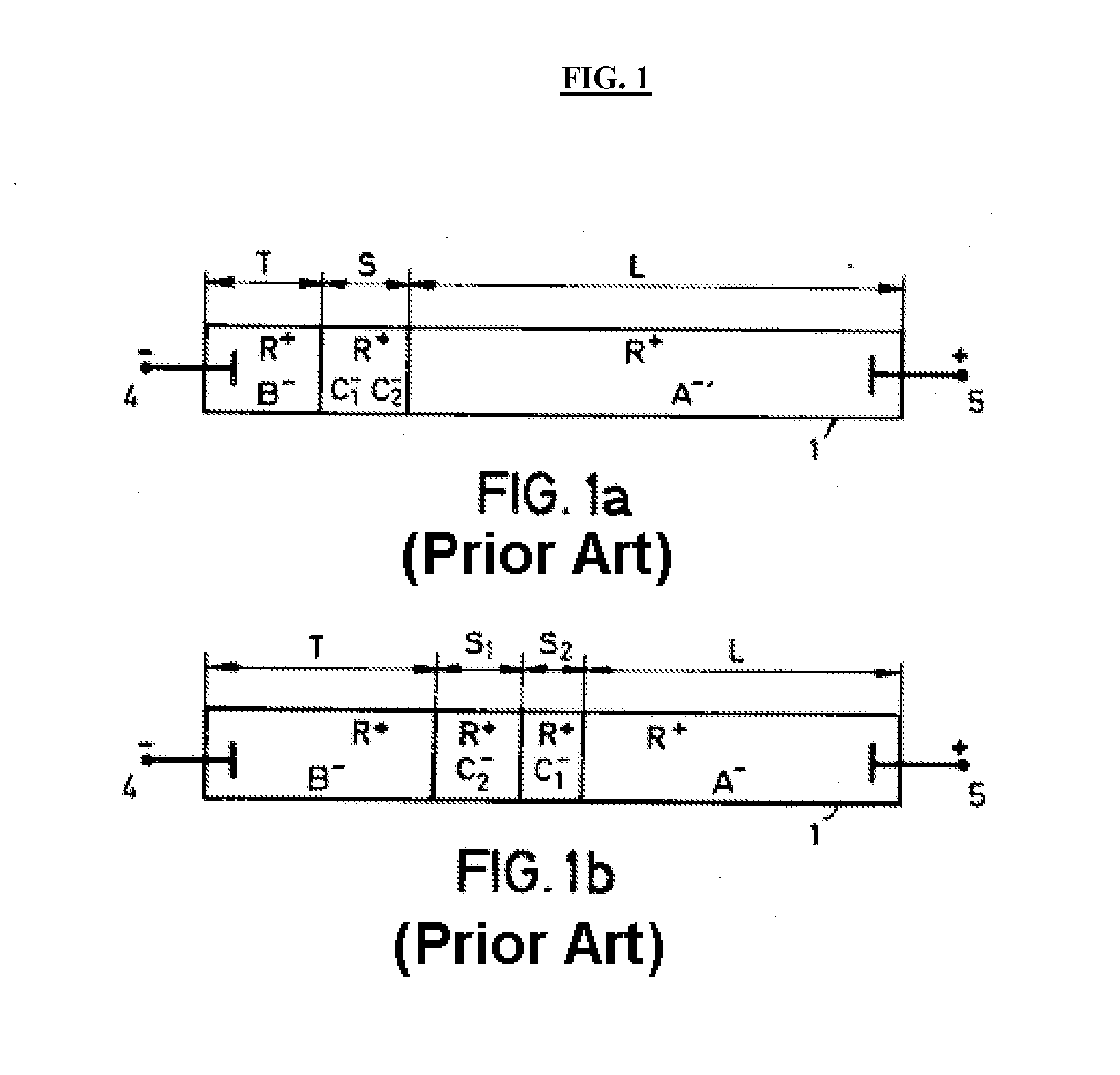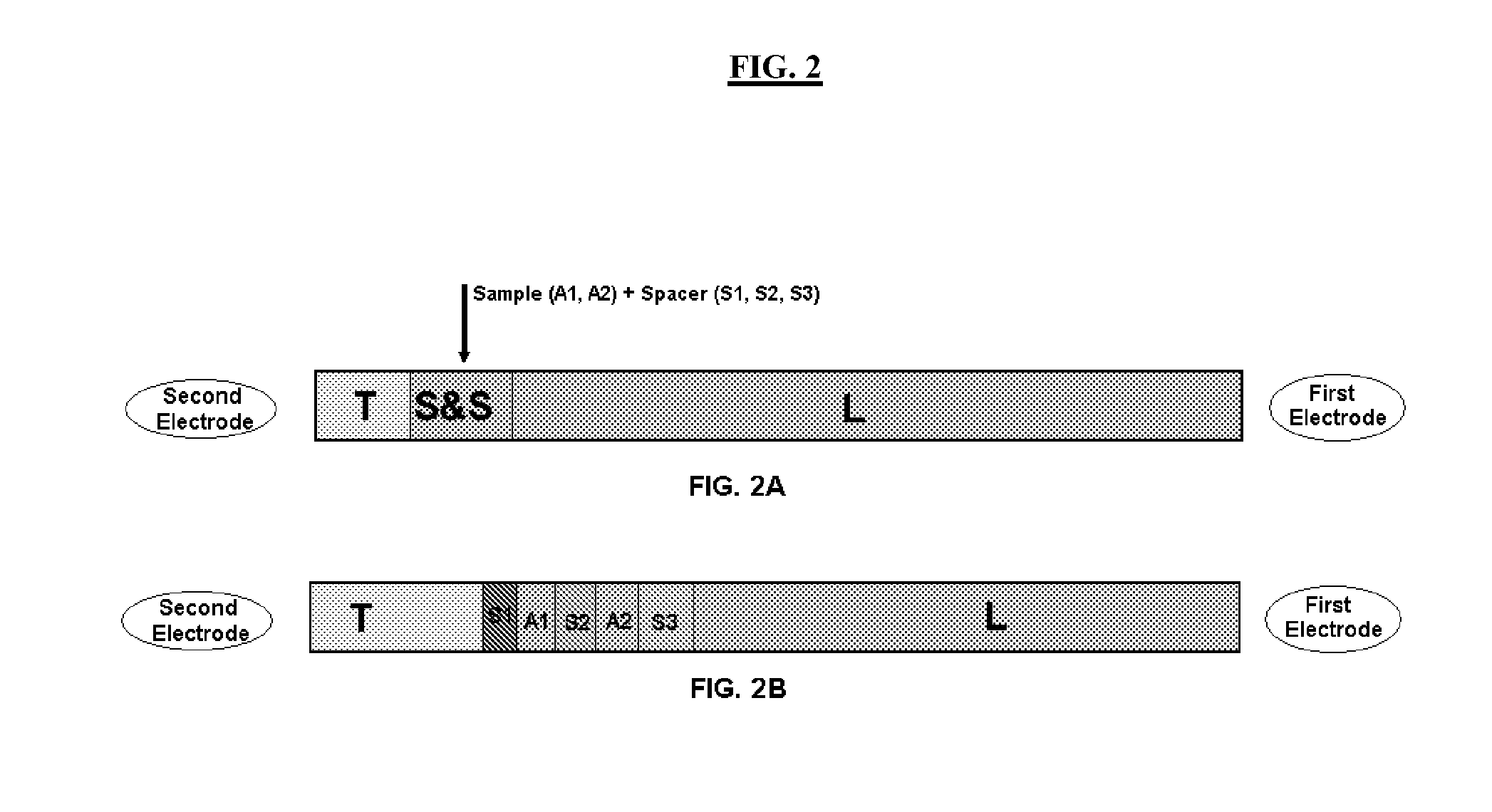Methods and devices for isotachophoresis applications
a technology of isotachophoretic separation and electrodes, applied in the direction of fluid pressure measurement, liquid/fluent solid measurement, peptide measurement, etc., can solve the problems of u.s. patent application 2004 guidance, significant loss of separated particles, and contamination of electrodes, etc., to enhance capillary isotachophoretic separation techniques
- Summary
- Abstract
- Description
- Claims
- Application Information
AI Technical Summary
Benefits of technology
Problems solved by technology
Method used
Image
Examples
example 1
Separation of pI Markers Using an FF ITP Method According to the Present Invention and Comparison with a Prior Art Method
[0277]A free-flow electrophoresis apparatus was set up comprising eight media inlets (E1-E8) of varying bore inside diameters. Inlets E1-E5 and E8 were 0.64 mm while E6 and E7 were 0.38 mm. A stabilized leader containing HCl (100 mM) and morpholinoethanol (200 mM) was introduced into inlet E1. A less concentrated leader of HCl (10 mM) and morpholinoethanol (20 mM) was introduced into inlets E2 through E5. A spacer composition comprising MES (1 mM), MOPS (1.1 mM) and MOPSO (0.8 mM), and BISTRIS 20 mM to enhance the conductivity was introduced into inlet E6. A diluted terminator comprising NaOH (10 mM) and HEPES (20 mM) was introduced into inlet E7, and a non-diluted terminator comprising NaOH (50 mM) and HEPES (100 mM) was introduced into inlet E8. Free-flow continuous isotachophoresis was performed on a mixed sample of pI markers at a voltage of 700 V. The curren...
example 2
Separation of Peroxisomes with Interval FF ITP
[0282]In a second example, an FFE apparatus was set up comprising eight media inlets (E1-E8) of varying bore inside diameters. Inlets E1-E5 and E8 were 0.64 mm while E6 and E7 were 0.38 mm. A stabilized leader containing HCl (100 mM) and BISTRIS (200 mM) was introduced into inlet E1. A less concentrated leader of HCl (10 mM) and BISTRIS (20 mM) was introduced into inlets E2 through E5. A spacer composition comprising HAc (1.3 mM), lactic acid (1.0 mM), glucuronic acid (3.25 mM), ACES (2.0 mM), MOPSO (1.6), and BISTRIS (17 mM) were introduced into inlet E6. A diluted terminator comprising NaOH (10 mM) and HEPES (20 mM) was introduced into inlet E7, and a non-diluted terminator comprising NaOH (50 mM) and HEPES (100 mM) was introduced into inlet E8. As an additive to the mixed sample, sucrose (250 mM) was included. Free-flow isotachophoresis was performed at a voltage of 800 Volts with a sample comprising organelles (peroxisomes) that was ...
PUM
| Property | Measurement | Unit |
|---|---|---|
| Fraction | aaaaa | aaaaa |
| Magnetic field | aaaaa | aaaaa |
| Volume | aaaaa | aaaaa |
Abstract
Description
Claims
Application Information
 Login to View More
Login to View More - R&D
- Intellectual Property
- Life Sciences
- Materials
- Tech Scout
- Unparalleled Data Quality
- Higher Quality Content
- 60% Fewer Hallucinations
Browse by: Latest US Patents, China's latest patents, Technical Efficacy Thesaurus, Application Domain, Technology Topic, Popular Technical Reports.
© 2025 PatSnap. All rights reserved.Legal|Privacy policy|Modern Slavery Act Transparency Statement|Sitemap|About US| Contact US: help@patsnap.com



